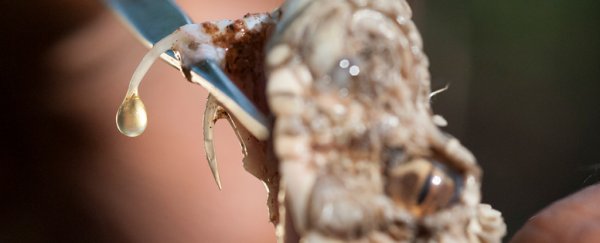dies at 90
MARCH 30, 2021 / 11

G. Gordon Liddy, who was convicted for his role in coordinating the Watergate break-in that led to President Richard Nixon's resignation, died on Tuesday. He was 90. File Photo by Bill Greenblatt/UPI | License Photo
March 30 (UPI) -- G. Gordon Liddy, known best for engineering the bungled break-in that led to the Watergate scandal, has died, his family said Tuesday. He was 90.
Liddy's son Thomas P. Liddy said his father died at the home of his daughter Alexandra Liddy Bourne in Vernon, Va. He told The New York Times that his father had Parkinson's disease and had been in declining health.
He told The Washington Post that his death was not related to COVID-19.
While working for President Richard Nixon in 1972, Liddy was arrested along with fellow conspirator E. Howard Hunt after Nixon campaign security official James W. McCord Jr. and four Cubans returned to the Watergate complex in Washington, D.C., weeks after they had planted bugs and photographed documents in the Democrat National Committee offices and were caught by police.
The arrests uncovered a larger conspiracy orchestrated by Liddy and Hunt, who worked to seal information leaks in the Nixon administration, which included breaking into the office of Daniel Ellsberg, who leaked the Pentagon papers to The New York Times.
Liddy refused to testify before the grand jury investigating the Watergate scandal that led to Nixon's resignation and was sentenced to six to 20 years in prison, the greatest handed down to any of those involved.
He only served 52 months, however, and President Jimmy Carter commuted his term in 1977.Born George Gordon Battle Liddy on Nov. 30, 1930, in Brooklyn, N.Y., Liddy was raised in Hoboken, N.J., where he said he overcame a fearful disposition and respiratory problems as a youth by lifting weights and putting himself through tests of will such as placing his hand over a flame and eating a rat to overcome his revulsion to the vermin.
He joined the Army in 1952 and worked as an FBI field agent from 1957 to 1962 before launching a political career, unsuccessfully running for the Republican nomination to represent New York's 28th district in Congress.
Liddy was appointed to the post of special assistant to the secretary of the treasury for the Nixon administration and eventually became part of a special investigations unit tasked with combating White House leaks known as "the Plumbers."
In the 1980s, he took on various film and television roles, including appearing on Miami Vice, in addition to engaging in a tour of debates against 1960s LSD guru Timothy Leary on college campuses.
He then hosted The G. Gordon Liddy Show, a syndicated conservative talk-radio program from 1992 until he retired in 2012.
Liddy married Francis Ann Purcell in 1957 and the couple had five children. Liddy's wife died in 2010. He is survived by his sister, Margaret McDermott, two daughters, three sons, 12 grandchildren and two great-grandchildren.
HE BUSTED LEARY FOR LSD IN THE SIXTIES
IN THE EIGHTIES HE AND LEARY TOURED AS LIBERTARIAN COMEDIANS
MARCH 30, 2021 / 11

G. Gordon Liddy, who was convicted for his role in coordinating the Watergate break-in that led to President Richard Nixon's resignation, died on Tuesday. He was 90. File Photo by Bill Greenblatt/UPI | License Photo
March 30 (UPI) -- G. Gordon Liddy, known best for engineering the bungled break-in that led to the Watergate scandal, has died, his family said Tuesday. He was 90.
Liddy's son Thomas P. Liddy said his father died at the home of his daughter Alexandra Liddy Bourne in Vernon, Va. He told The New York Times that his father had Parkinson's disease and had been in declining health.
He told The Washington Post that his death was not related to COVID-19.
While working for President Richard Nixon in 1972, Liddy was arrested along with fellow conspirator E. Howard Hunt after Nixon campaign security official James W. McCord Jr. and four Cubans returned to the Watergate complex in Washington, D.C., weeks after they had planted bugs and photographed documents in the Democrat National Committee offices and were caught by police.
The arrests uncovered a larger conspiracy orchestrated by Liddy and Hunt, who worked to seal information leaks in the Nixon administration, which included breaking into the office of Daniel Ellsberg, who leaked the Pentagon papers to The New York Times.
Liddy refused to testify before the grand jury investigating the Watergate scandal that led to Nixon's resignation and was sentenced to six to 20 years in prison, the greatest handed down to any of those involved.
He only served 52 months, however, and President Jimmy Carter commuted his term in 1977.Born George Gordon Battle Liddy on Nov. 30, 1930, in Brooklyn, N.Y., Liddy was raised in Hoboken, N.J., where he said he overcame a fearful disposition and respiratory problems as a youth by lifting weights and putting himself through tests of will such as placing his hand over a flame and eating a rat to overcome his revulsion to the vermin.
He joined the Army in 1952 and worked as an FBI field agent from 1957 to 1962 before launching a political career, unsuccessfully running for the Republican nomination to represent New York's 28th district in Congress.
Liddy was appointed to the post of special assistant to the secretary of the treasury for the Nixon administration and eventually became part of a special investigations unit tasked with combating White House leaks known as "the Plumbers."
After Watergate, Liddy wrote a series of books ranging from the fictional spy thriller Out of Control in 1979 to a 1980 autobiography titled Will that detailed Watergate and his time in federal prison.
HE ADVISED SOLDIER OF FORTUNE MAGAZINE A CIA FRONT
In the 1980s, he took on various film and television roles, including appearing on Miami Vice, in addition to engaging in a tour of debates against 1960s LSD guru Timothy Leary on college campuses.
He then hosted The G. Gordon Liddy Show, a syndicated conservative talk-radio program from 1992 until he retired in 2012.
Liddy married Francis Ann Purcell in 1957 and the couple had five children. Liddy's wife died in 2010. He is survived by his sister, Margaret McDermott, two daughters, three sons, 12 grandchildren and two great-grandchildren.










 © Provided by National Post The Irish government's 'Our Rural Future' strategy includes the creation of more than 400 remote working hubs in locations, potentially, such as Galway.
© Provided by National Post The Irish government's 'Our Rural Future' strategy includes the creation of more than 400 remote working hubs in locations, potentially, such as Galway. © REUTERS/Johanna Geron The COVID-19 pandemic has delivered ‘an unparalleled opportunity’ to balance economic recovery across Ireland, says the Irish Taoiseach Micheál Martin.
© REUTERS/Johanna Geron The COVID-19 pandemic has delivered ‘an unparalleled opportunity’ to balance economic recovery across Ireland, says the Irish Taoiseach Micheál Martin. © John Cogill/Bloomberg News Life in Kilkenny, with 26,500 people, is a far cry from the pace in Dublin.
© John Cogill/Bloomberg News Life in Kilkenny, with 26,500 people, is a far cry from the pace in Dublin.











